When Did Angler Boats Stop Using Wood?
Angler Boats, a well-known boat manufacturer, has been producing boats for over 50 years. They have a reputation for producing high-quality, durable boats that are perfect for fishing and other water activities. One question that has been asked by many people is when did Angler Boats stop using wood in their boats?
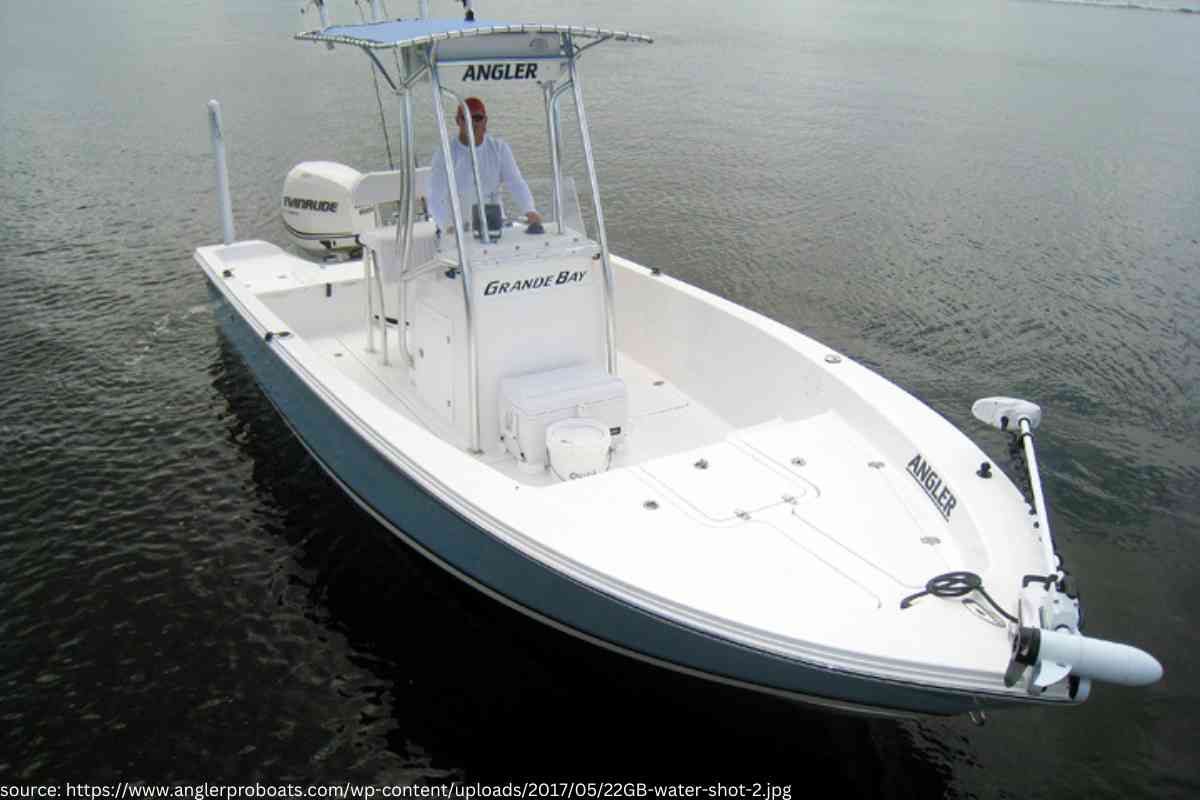
When did Angler Boats stop using wood in their boats?
Angler Boats stopped using wood in their boats in the early 2000s. This was a gradual transition, as many other boat manufacturers were also making the switch from wood to composite materials like fiberglass. The use of wood in boats had been a longstanding tradition, but it was found that composite materials were more durable and long-lasting.
Today, Angler Boats continues to produce high-quality boats that are made with composite materials like fiberglass. They are committed to providing customers with the best possible boating experience, and their boats are designed to be both functional and stylish. Whether you are an avid fisherman or just enjoy spending time on the water, an Angler Boat is a great choice.
The Era of Wooden Boats
Wooden boats have been around for centuries and were the primary material used in boat construction until the mid-20th century. While wooden boats are aesthetically pleasing and have a unique charm, they require a lot of maintenance to keep them in good condition. Wooden boats are susceptible to rot, warping, and splitting, which can be costly to repair.
Maintenance is not the only issue with wooden boats. They are also not as durable as boats made from other materials, such as fiberglass or aluminum. Wooden boats are more likely to suffer damage from collisions or rough waters.
Despite these drawbacks, wooden boats remained popular for a long time. They were used for fishing, transportation, and even warfare. However, as technology advanced, boat manufacturers began to experiment with other materials.
In the 1960s, fiberglass boats became popular due to their durability and low maintenance requirements. This led to a decline in the use of wooden boats. However, some boat manufacturers continued to use wood in boat construction until the late 1980s and early 1990s.
Today, wooden boats are still used by some enthusiasts and traditionalists, but they are no longer the primary material used in boat construction. Boat manufacturers have moved on to more durable and low-maintenance materials, such as fiberglass and aluminum.
Transition to Fiberglass and Composite Materials
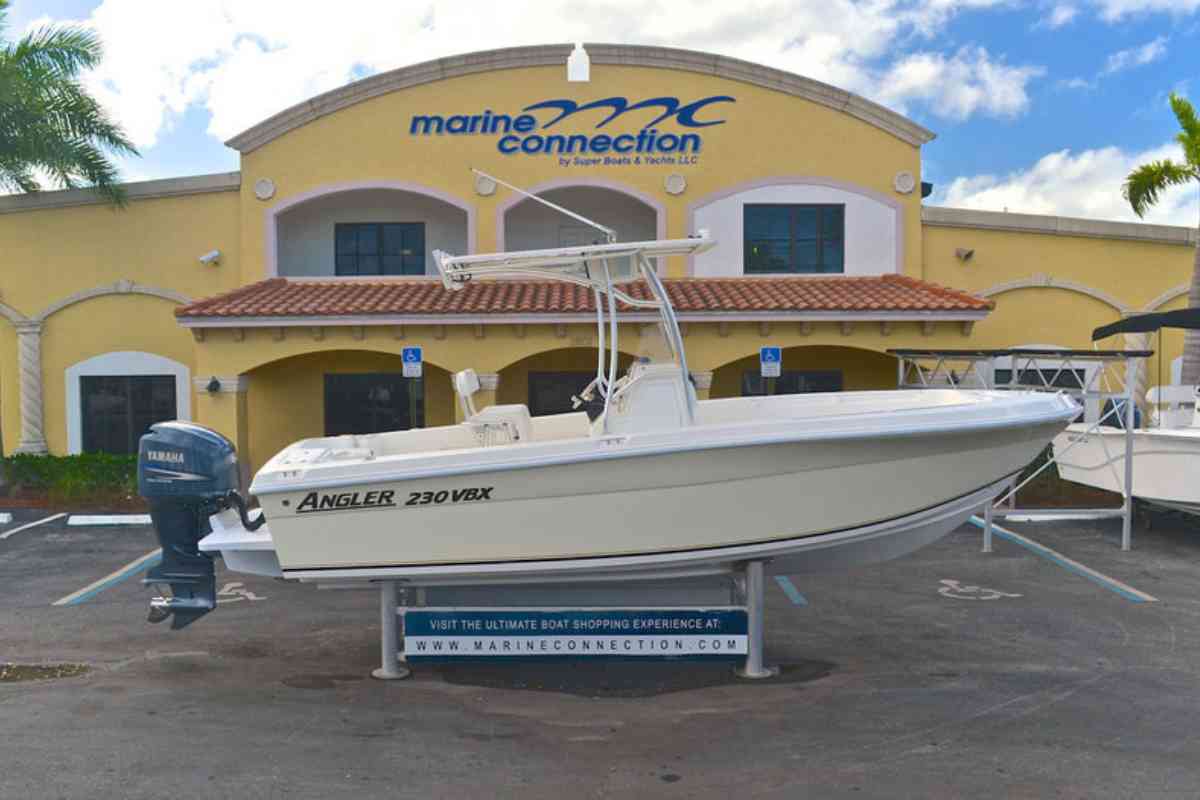
Introduction of Fiberglass
Fiberglass is a reinforced plastic material made from woven glass fibers and a resin binder. It was introduced as a boat building material in the late 1940s and early 1950s and quickly gained popularity due to its durability, low maintenance, and ease of production. Fiberglass boats were initially used for small boats, but by the 1960s, they were being used to build larger boats as well.
Composite Materials in Boat Construction
Composite materials are made by combining two or more materials to create a new material with improved properties. In boat construction, composite materials are used to replace wood and metal components, such as stringers, transoms, and hulls. Composite materials are lightweight, strong, and resistant to corrosion and rot, making them an ideal material for boat construction.
Angler Boats, like many other boat manufacturers, began transitioning from wood to fiberglass and composite materials in the 1990s. Over 20 years ago, Angler Boats started replacing wood with composite materials in their boats, one model at a time. By 1997, all of their boats were wood-free in production for product longevity.
Today, fiberglass and composite materials are the primary materials used in the construction of boats. They offer numerous advantages over traditional materials such as wood and metal, including improved durability, reduced maintenance, and increased longevity.
Key Players in the Transition
The transition from wood to composite materials in boat manufacturing was a gradual process that spanned several years. During this period, many manufacturers phased out the use of wooden components in their boats. In this section, we will take a closer look at the key players in this transition, including early adopters and industry leaders.
Early Adopters
Some boat manufacturers were quick to adopt composite materials and phase out the use of wood in their boats. For example, Yamaha was one of the early adopters of composite materials, and they began using them in their boats in the 1980s. Similarly, Skeeter and Ranger both made the switch to fiberglass transoms fairly early, and Triton never made fiberglass bass boats with wood transoms.
Industry Leaders
Other boat manufacturers were slower to adopt composite materials, but they eventually made the transition. For example, Bayliner, Pro-Line, and Fountain all began phasing out the use of wood in their boats in the 1990s. Boston Whaler was also an industry leader in this transition, and they began using foam-filled fiberglass stringers and a foam-cored fiberglass hull in the mid-1990s.
Chaparral and Sea Ray were also leaders in the transition from wood to composite materials. Chaparral began using composite materials in their boats in the early 1990s, and Sea Ray began phasing out the use of wood in their boats in the mid-1990s.
Donzi Marine and Cobia were also among the boat manufacturers that made the switch to composite materials in the late 1990s. American Marine Holdings, the parent company of Donzi Marine, Baja, and Fountain, began using composite materials in their boats in the late 1990s.
The transition from wood to composite materials in boat manufacturing was a gradual process that spanned several years. While some manufacturers were early adopters of composite materials, others were slower to make the transition. However, by the late 1990s, most boat manufacturers had phased out the use of wood in their boats.
Impact on Boat Design and Performance
When Angler Boats phased out the use of wood in their boats, it had a significant impact on the design and performance of their vessels. This section will explore the changes in hull design, deck and console design, and overall performance.
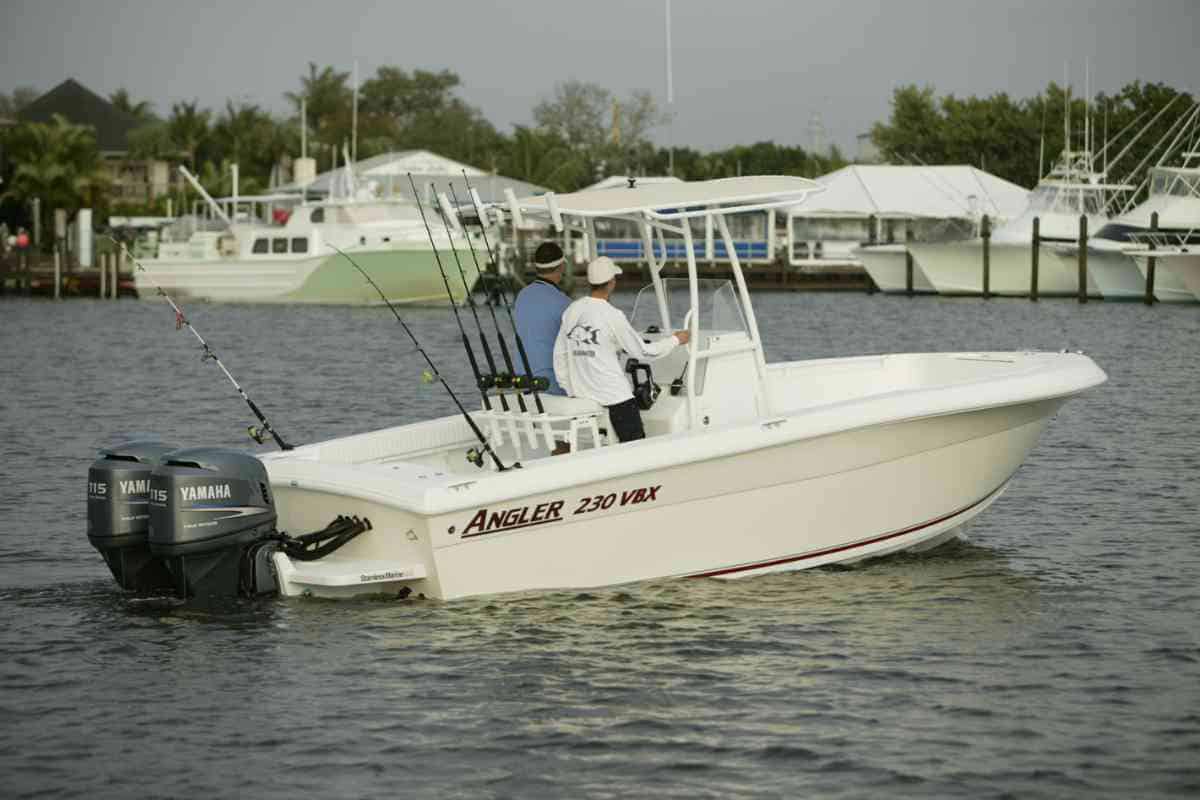
Hull Design
The use of wood in the construction of boat hulls was common in the past. However, wood has several drawbacks, such as being prone to rot and decay. With the introduction of composite materials, boat manufacturers like Angler Boats were able to create hulls that were more durable, lighter, and less prone to damage.
The switch from wood to composite materials allowed for greater design flexibility, as composite materials can be molded into complex shapes that are difficult or impossible to achieve with wood. This has led to more innovative and efficient hull designs, which in turn has improved the overall performance of Angler Boats.
Deck and Console Design
The elimination of wood from the deck and console of Angler Boats has also had a significant impact on their design. Composite materials are lighter and stronger than wood, and they do not require the same level of maintenance. This has allowed for more streamlined deck and console designs, which in turn has improved the overall performance of the boats.
The use of composite materials has also allowed for the creation of more functional and ergonomic consoles. Angler Boats can now incorporate more features into the console without adding weight, which has improved the overall usability of their boats.
Performance
Composite materials are lighter and stronger than wood, which has led to faster, more efficient boats. Angler Boats can now achieve higher speeds with less horsepower, which has improved fuel efficiency and reduced operating costs.
The use of composite materials has also led to more stable boats, as composite materials have a higher strength-to-weight ratio than wood. This has improved the handling and stability of Angler Boats, making them safer and more comfortable to operate.
The switch from wood to composite materials has had a significant impact on the design and performance of Angler Boats. The elimination of wood has allowed for more innovative and efficient hull designs, streamlined deck and console designs, and improved overall performance.
Specific Boat Models and Their Construction
Champion Boats
Champion Boats was one of the last boat manufacturers to stop using wood in their boats. They continued to use wood in their stringers and transoms until the early 2000s. However, they did make the transition to fiberglass construction eventually.
Grady-White Boats
Grady-White Boats is a well-known boat manufacturer that stopped using wood in their boats in the mid-1990s. They made the switch to foam-cored fiberglass construction, which improved the durability and performance of their boats.
Ranger Boats
Ranger Boats is another well-known boat manufacturer that stopped using wood in their boats in the mid-1990s. They made the switch to foam-cored fiberglass construction, which improved the strength and weight of their boats.
Legend Boats
Legend Boats is a newer boat manufacturer that has never used wood in their boats. They use a composite foam-cored construction that provides strength and durability, while also being lightweight.
Triton Boats
Triton Boats is another newer boat manufacturer that has never used wood in their boats. They use a fiberglass construction that provides strength and durability, while also being lightweight. They started making boats in 1997 and have always used fiberglass transoms.
Pro-Line Boats
Pro-Line Boats stopped using wood in their boats over 20 years ago. They made the switch to composite materials, which improved the strength and durability of their boats. Pro-Line Boats was recently bought out by Iconic Marine Group.
Most boat manufacturers stopped using wood in their boats in the mid-1990s to early 2000s. Champion Boats was one of the last to make the switch, while newer manufacturers like Legend Boats and Triton Boats have always used alternative materials. Grady-White Boats, Ranger Boats, and Pro-Line Boats made the switch to foam-cored fiberglass or composite materials, which improved the strength and durability of their boats.
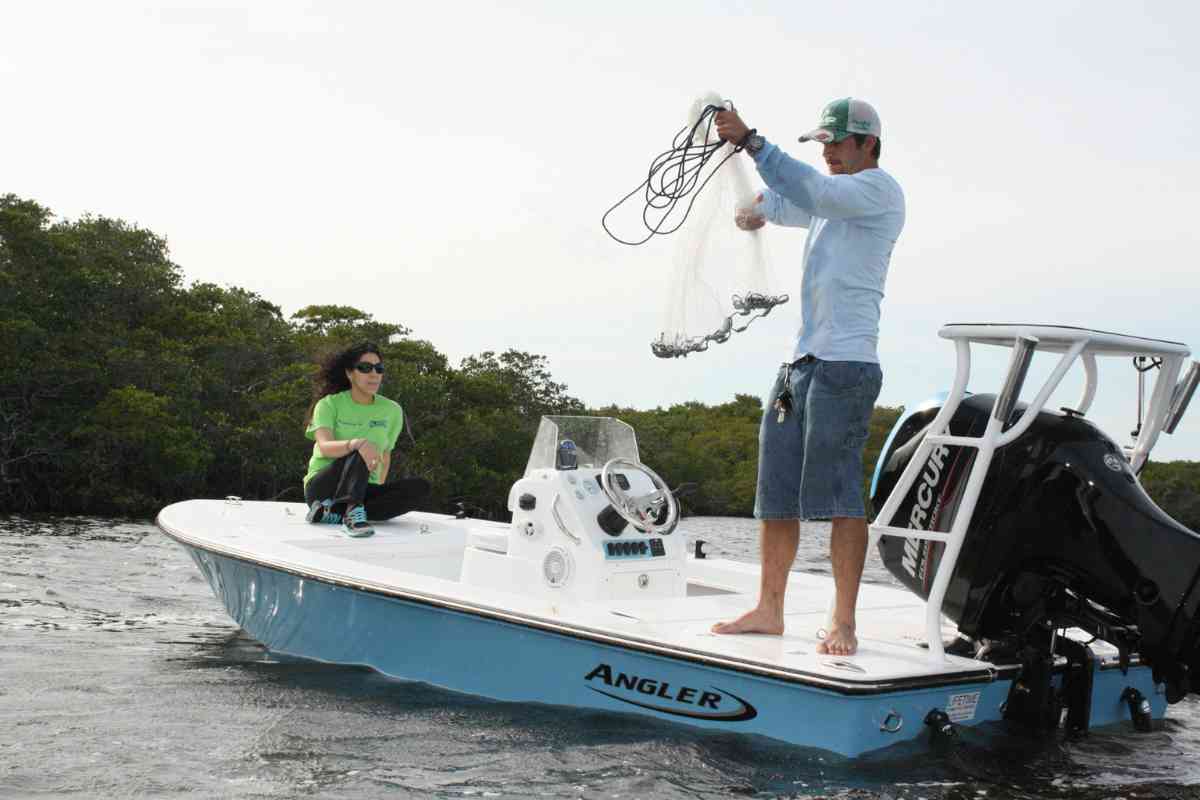
The Issue of Wood Rotting in Boats
Wood rotting is a major issue that boat owners have to deal with. Every boat that has ever been made with a wood transom will eventually have a rotted transom if enough time goes by. For some boats, that time is 2 years, while for others, it can be 12 or 22 years. However, mother nature’s rotting agents will win against a wood transom every single time.
Rotting is a common problem in boats that use wood as a construction material. The problem is caused by the exposure of wood to moisture, which leads to the growth of fungi that break down the wood fibers. This can cause the wood to become weak, which can lead to structural problems in the boat.
The issue of wood rotting has led many boat manufacturers to switch from using wood to other materials such as fiberglass, aluminum, or composite materials. For instance, Grady-White stopped using wood in their boats in 1998 and opted for green board, which was still wood, but more resistant to rot than the previous marine plywood. Slowly, the company phased out wood in their hulls and other components and left wood only in a few components.
The Rise of Wood-Free Boats
Over the years, boat manufacturers have been transitioning from wood to other materials such as aluminum and composite. This move has been driven by the need for boats that are more durable, easier to maintain, and less prone to rot.
One of the main reasons for the shift to wood-free boats is that wood, being an organic material, is susceptible to rot and decay. This can lead to structural damage and compromise the safety of the vessel. Additionally, wood requires a lot of maintenance to keep it in good condition, which can be time-consuming and expensive.
Aluminum boats have gained popularity as an alternative to wood due to their durability, lightweight, and resistance to corrosion. They are also relatively low maintenance and can withstand harsh marine environments. However, aluminum boats can be noisy and may not provide the same level of comfort as fiberglass or composite boats.
Composite boats, on the other hand, are made from a combination of materials such as fiberglass, Kevlar, and carbon fiber. They offer the benefits of both wood and aluminum boats while eliminating their drawbacks. Composite boats are lightweight, durable, and require minimal maintenance. They also provide a smooth and comfortable ride, making them a popular choice among boaters.
The shift to wood-free boats has been driven by the need for more durable, low-maintenance vessels that can withstand harsh marine environments. Aluminum and composite boats have emerged as popular alternatives to wood, offering unique benefits and advantages.
Community Response and Discussions
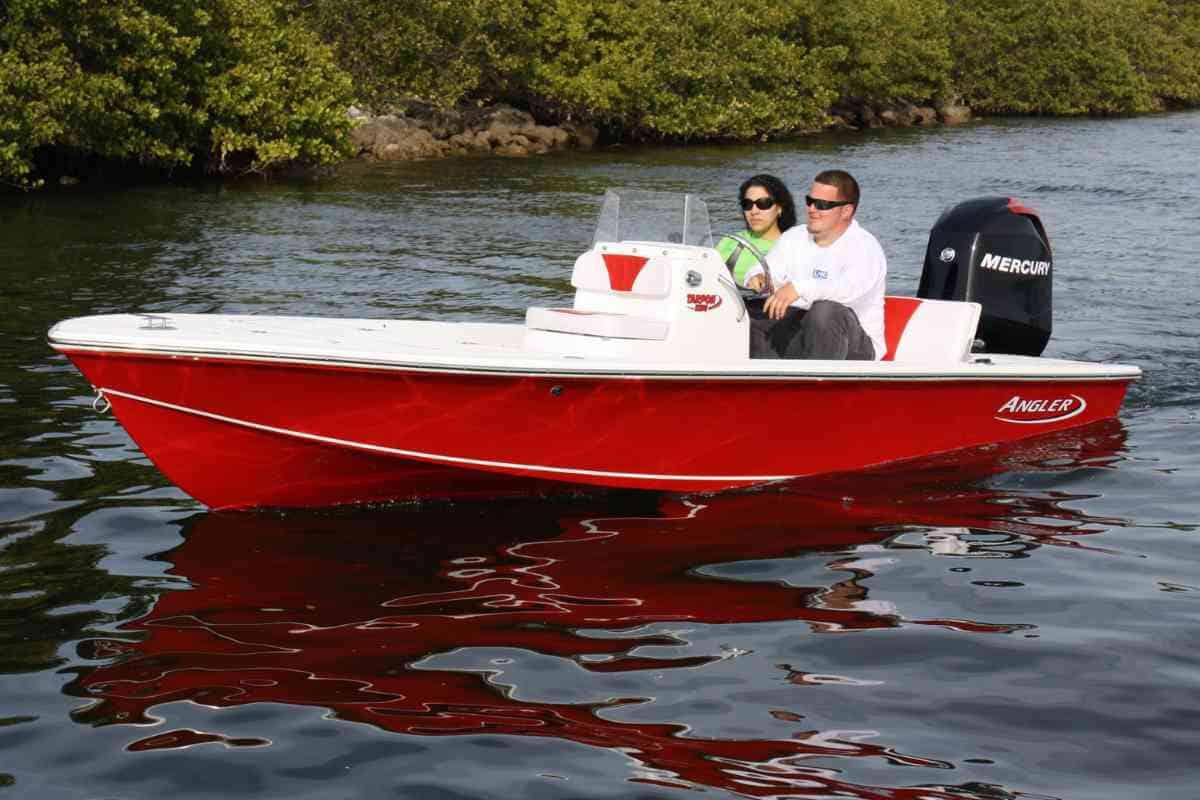
When it comes to the question of when Angler Boats stopped using wood in their boats, the community response has been mixed. Some people believe that Angler stopped using wood in their boats as early as the 1990s, while others believe that they continued to use wood in some models until the early 2000s.
Local guides and fishing forums in Texas, Louisiana, Georgia, and Florida have all had discussions about when Angler Boats stopped using wood. Many of these discussions have centered around the reliability and durability of Angler Boats, as well as the impact of wood on the environment.
The Coastal Conservation Association has also been involved in these discussions, advocating for the use of sustainable materials in boat construction. The Texas Fishing and Outdoors Show, Big Billy Kinder Outdoors, and ShareLunker have all featured discussions about the use of wood in boat construction, with many experts weighing in on the issue.
The International Game Fish Association has also been monitoring the situation, as wood can have a negative impact on the performance of boats and the safety of anglers. Finally, Fox Sports Outdoors has highlighted the importance of using sustainable materials in boat construction, and has encouraged anglers to support companies that are committed to environmental stewardship.
Overall, the community response and discussions about when Angler Boats stopped using wood have been informative and engaging. While there is some disagreement about the timeline of when Angler made the switch to composite materials, there is a consensus that sustainable materials are the future of boat construction.
Conclusion
In conclusion, Angler Boats stopped using wood in their construction over 20 years ago. The company began replacing wood with composite materials on a rolling basis, with all models being wood-free by 1997. This transition allowed for greater product longevity and reduced the amount of upkeep required for owners.
Angler Boats are designed to be completely devoid of wood, which helps to avoid long-term issues with rotting wood. This feature is particularly important for fishing boats, as they are exposed to water and moisture on a regular basis. Additionally, the absence of wood makes it easier to maintain a clean and sanitary environment on board.
While Angler Boats are known for being wood-free, it is worth noting that other boat manufacturers have also made the switch to composite materials. Triton, for example, began producing fiberglass bass boats with fiberglass transoms in 1997, completely bypassing the use of wood transoms in their construction. This trend has continued over the years, and most boat manufacturers have stopped using wood in their boats.
Overall, the move away from wood in boat construction has been a positive one. It has allowed for greater durability and reduced maintenance, making boats more accessible and enjoyable for owners. Whether you are looking for a fishing boat, bass boat, or any other type of vessel, it is important to consider the materials used in its construction, including the absence of wood in critical areas such as the sink, fishboxes, and head.
Frequently Asked Questions
When did boat manufacturers transition from using wood to fiberglass?
Boat manufacturers began transitioning from using wood to fiberglass in the 1950s. Fiberglass offered several advantages over wood, including increased durability, lower maintenance requirements, and improved performance.
When did angler boats switch from wood to fiberglass?
According to FishingIsEasy, Angler Boats began replacing wood with composite materials over 20 years ago. It was a rolling change, one model at a time, with all models wood-free by 1997.
When did the use of wood in boat construction become less common?
The use of wood in boat construction began to decline in the 1950s as fiberglass became more popular. By the 1970s, most boat manufacturers had stopped using wood in their boats due to the many advantages of fiberglass.
When did the majority of boat manufacturers stop using wood?
The majority of boat manufacturers stopped using wood in the 1970s. By this time, fiberglass had become the material of choice for boat construction due to its many advantages over wood.
What year did angler boats stop using wood?
According to FishingIsEasy, all Angler Boats models were wood-free by 1997.
When did the shift from wooden boats to fiberglass boats begin?
The shift from wooden boats to fiberglass boats began in the 1950s. Fiberglass offered many advantages over wood, including increased durability, lower maintenance requirements, and improved performance. By the 1970s, fiberglass had become the material of choice for boat construction.
